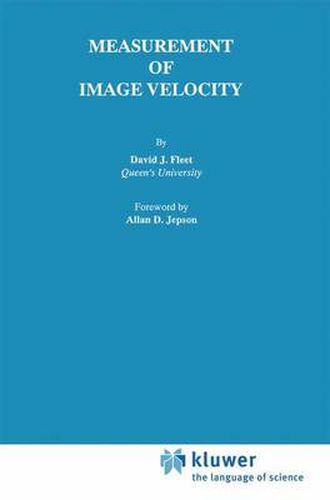Readings Newsletter
Become a Readings Member to make your shopping experience even easier.
Sign in or sign up for free!
You’re not far away from qualifying for FREE standard shipping within Australia
You’ve qualified for FREE standard shipping within Australia
The cart is loading…






This title is printed to order. This book may have been self-published. If so, we cannot guarantee the quality of the content. In the main most books will have gone through the editing process however some may not. We therefore suggest that you be aware of this before ordering this book. If in doubt check either the author or publisher’s details as we are unable to accept any returns unless they are faulty. Please contact us if you have any questions.
Measurement of Image Velocity presents a computational framework for computing motion information from sequences of images. Its specific goal is the measurement of image velocity (or optical flow), the projection of 3-D object motion onto the 2-D image plane.
The formulation of the problem emphasizes the geometric and photometric properties of image formation, and the occurrence of multiple image velocities caused, for example, by specular reflections, shadows, or transparency. The method proposed for measuring image velocity is based on the phase behavior in the output of velocity-tuned filters. Extensive experimental work is used to show that phase can be a reliable source of pure image translation, small geometric deformation, smooth contrast variations, and multiple local velocities. Extensive theorectical analysis is used to explain the robustness of phase with respect to deviations from image translation, and to detect situations in which phase becomes unstable. The results indicate that optical flow may be extracted reliably for computing egomotion and structure from motion.
The monograph also contains a review of other techniques and frequency analysis applied to image sequences, and it discusses the closely related topics of zero-crossing tracking, gradient-based methods, and the measurement of binocular disparity. The work is relevant to those studying machine vision and visual perception.
$9.00 standard shipping within Australia
FREE standard shipping within Australia for orders over $100.00
Express & International shipping calculated at checkout
This title is printed to order. This book may have been self-published. If so, we cannot guarantee the quality of the content. In the main most books will have gone through the editing process however some may not. We therefore suggest that you be aware of this before ordering this book. If in doubt check either the author or publisher’s details as we are unable to accept any returns unless they are faulty. Please contact us if you have any questions.
Measurement of Image Velocity presents a computational framework for computing motion information from sequences of images. Its specific goal is the measurement of image velocity (or optical flow), the projection of 3-D object motion onto the 2-D image plane.
The formulation of the problem emphasizes the geometric and photometric properties of image formation, and the occurrence of multiple image velocities caused, for example, by specular reflections, shadows, or transparency. The method proposed for measuring image velocity is based on the phase behavior in the output of velocity-tuned filters. Extensive experimental work is used to show that phase can be a reliable source of pure image translation, small geometric deformation, smooth contrast variations, and multiple local velocities. Extensive theorectical analysis is used to explain the robustness of phase with respect to deviations from image translation, and to detect situations in which phase becomes unstable. The results indicate that optical flow may be extracted reliably for computing egomotion and structure from motion.
The monograph also contains a review of other techniques and frequency analysis applied to image sequences, and it discusses the closely related topics of zero-crossing tracking, gradient-based methods, and the measurement of binocular disparity. The work is relevant to those studying machine vision and visual perception.